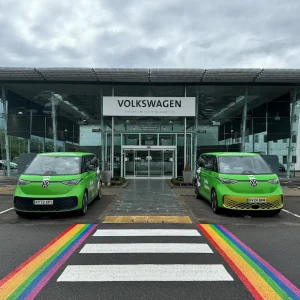Land Rover might not be best known for its environmental awareness today but it was keen to map out its future eco plans at a special pre-British motor show event last night.
The 4×4 brand announced that full hybrid diesel engines similar to the technology showcased in the 60mpg/120g/km CO2 LRX concept car, first shown in Detroit in early 2008, are now undergoing internal engineering test and evaluation in two Freelander mules.
The test cars feature Electric Rear Axle Drive (ERAD), a crank integrated starter generator (CISG) and a ‘next generation’ lithium ion battery pack that Land Rover believes will deliver dramatic CO2 emission reductions as well as offering enhanced all-terrain capability.
Land Rover‘s engineering boffins say the test mules are currently recording CO2 savings of 24% on average over baseline models.
The project is a joint research project between Land Rover and the Government’s Energy Savings Trust – which has provided more than a fifth of the funding – and Land Rover says the technology is modular and scalable so could be transferable to all cars in its range (as well as potentially all-new future Jaguars too).
In terms of when such technology could become commercially viable, all Land Rover top brass remained tight-lipped and on-message but did concede the complexity of a full diesel hybrid could only be accommodated at an all-new model stage. If this scenario proves correct, the first likely recipient of this technology will be the compact LRX off-roader due around 2012 and will be sold at a premium over conventional models to offset the considerable development costs.
Meanwhile, Land Rover customers can look forward to fuel and emissions benefits from stop/start tech becoming standard on all Freelander 2 diesel manual models in early 2009 – resulting in CO2 emission cuts of 8.6% from 196g/km to 179g/km – plus a series of weight-reducing and aerodynamic enhancements on existing model facelifts after that.





